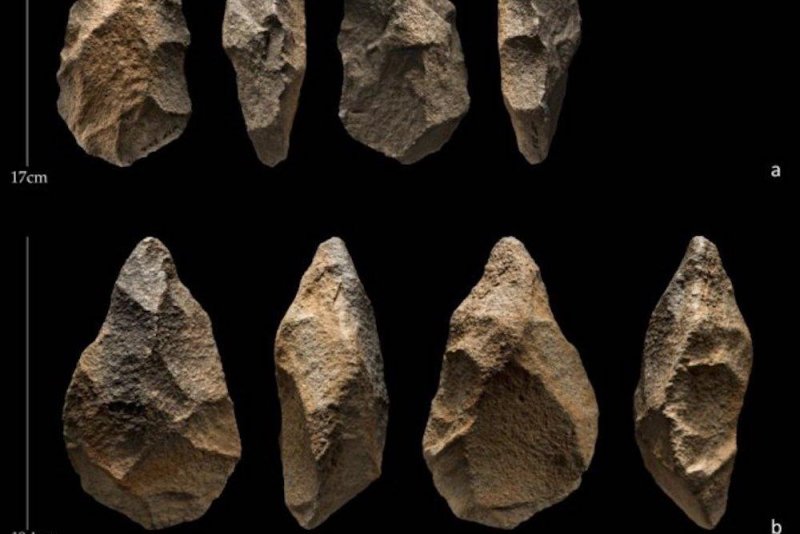Researchers recovered more than 500 stone tools, including dozens of Acheulean hand axes, from the site of Saffaqah in Central Saudi Arabia. Photo by Ian R. Cartwright/Palaeodeserts
Nov. 29 (UPI) -- Stone tools unearthed in Saudi Arabia suggest early human ancestors were living on the Arabian Peninsula as recently as 190,000 years ago.
Stone hand axes are the trademark of Acheulean technology, the longest cultural-technological tradition in human evolutionary history. The new findings -- announced Thursday in the journal Scientific Reports -- suggest that tradition spread across the Arabian Peninsula and persisted for longer than previously thought.
The region is also home to some of the oldest evidence of Acheulean technology, including stone tools dated to 1.5 million years ago. Acheulean hominins lived in the Levant and the Arabian Peninsula for hundreds of thousands of years, and may have still been living in the region when the first Homo sapiens arrived.
The stone tools were recovered from a dig site called Saffaqah in Central Saudi Arabia. More than 500 stone artifacts were recovered, including hand axes, cleavers and flakes. Researchers think the site was used for stone tool-making by Acheulean hominins.
"It is not surprising that early humans came here to make stone tools," Eleanor Scerri, researcher at the Max Planck Institute for the Science of Human History in Germany, said in a news release. "The site is located on a prominent andesite dyke that rises above the surrounding plain. The spot was both a source of raw material as well as a prime location to survey a landscape that, back then, sat between two major river systems."
It's likely early hominins continued to occupy the Saffaqah site even more recently than 190,000 years ago, as researchers found identical stone hand axes in layers above those dated and described in the new study.
The archaeological evidence in the region suggests Acheulean hominins moved along now-dry river networks, taking advantage of marginally habitable land -- pockets of green surrounded by a harsh, arid landscape.
It's possible these early human ancestors migrated themselves into relative isolation in the middle of the Arabian Peninsula, which could explain why they persisted in the region for so long.
"These hominins were resourceful and intelligent," said Scerri, "They dispersed across a challenging landscape using technology commonly seen as reflecting a lack of inventiveness and creativity. Instead of perceiving the Acheulean this way, we should really be struck by how flexible, versatile and successful this technology was."















